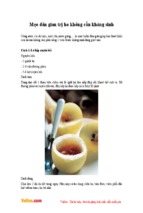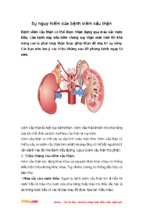Institute for Innovation
and Improvement
The Handbook of Quality
and Service
Improvement Tools
2
The Handbook of Quality and Service Improvement Tools
Foreword
If you are involved in treating patients, managing and/or improving health services or
managing or training those that do, you will understand the importance of providing the
best care possible for all our patients.
Great progress has been made in improving service standards and access and in reducing
waiting times, but there is still some way to go to ensure consistently high standards of
patient care across the NHS.
It is clear that we need to ensure we are getting it right first time, which means better care
and better value through the reduction of waste and errors and the prioritisation of effective
treatments. Quality, innovation, productivity and prevention (QIPP) is the mechanism through
which we can achieve this.
QIPP is about creating an environment in which change and improvement can flourish; it
is about leading differently and in a way that fosters a culture of innovation; and it is
about providing staff with the tools, techniques and support that will enable them to take
ownership of improving quality of care.
The Handbook of Quality and Service Improvement Tools from the NHS Institute brings
together a collection of proven tools, theories and techniques to help NHS staff design and
implement quality improvement projects that do not compromise on the quality and safety of
patient care but rather enhance the patient experience.
It is not an exhaustive list and you will find plenty more information on the help and support
available from the NHS Institute on our website at www.institute.nhs.uk. But I do hope
you will find this handbook useful as you start your journey towards improving the quality,
productivity and efficiency of services you provide.
Julia RA Taylor
NHS Institute for Innovation and Improvement
www.institute.nhs.uk/qualitytools
3
Introduction
The Handbook of Quality and Service Improvement Tools brings together into a single
resource 75 proven tools, theories and techniques for quality and service improvement.
It is part of the Fundamentals for Quality Improvement from the NHS Institute for
Innovation and Improvement – a suite of publications that will assist you in finding innovative
ways to improve the quality, productivity and efficiency of patient care you provide. You can
find out more about all of these publications at www.institute.nhs.uk/fundamentals.
All of the tools, theories and techniques featured in the handbook and more are available
online in our searchable library, available free of charge to the NHS in England at
www.institute.nhs.uk/qualitytools.
You may find it useful to use the handbook in conjunction with the Step-by-Step Guide to
Tackling your Challenges, which maps some of the key challenges you have told us the health
service is facing against a range of quality and improvement tools and products developed
by the NHS Institute to support the NHS in improving the quality, productivity and efficiency
of services. This guide is available in hard copy and as an interactive PDF via the website at
www.institute.nhs.uk/challenges.
How to use The Handbook of Quality and Service
Improvement Tools
The handbook is divided into the following two sections:
Section one: Project management guide
This step-by-step guide provides a suggested framework that will enable you to systematically
progress through a quality and service improvement project.
Each organisation is different and you may find that the stages described here are slightly
different to the project management guide you are familiar with. However, there should be
enough similarities between the two for you to match the stages outlined in this guide against
those in your preferred framework for project management.
4
The Handbook of Quality and Service Improvement Tools
Section two: Quality and service improvement tools
In this section you will find a comprehensive set of tools, theories and techniques that will enable
you to expand your knowledge of tried-and-tested tools and techniques for improving quality and
productivity.
The tools have been grouped under the following headings, which relate to the type of task you may
be addressing:
1. Project management
2. Identifying problems
3. Stakeholder and user involvement
4. Mapping the process
5. Measurement for improvement
6. Demand and capacity management
7. Thinking creatively
8. Human dimensions of change.
Text highlighted in blue throughout the handbook indicates additional tools that will help you with
your service improvement efforts. An A-Z index can be found at the back of the handbook to help you
quickly find any additional tools you may need for the task in hand.
The Handbook for Quality and Service Improvement Tools will be helpful for both clinical and operational
staff involved in quality and service improvement/transformation.
www.institute.nhs.uk/qualitytools
5
Contents
Page
Section 1
Project management guide.....................................................8
Section 2
1 Project management.......................................................20
1.1
1.2
1.3
1.4
1.5
1.6
1.7
1.8
Scope your project.......................................................................21
Four columns: link your project to the organisation’s aims...........23
Benefits realisation.......................................................................24
Action planning...........................................................................26
Responsibility charting..................................................................28
Sustaining momentum.................................................................32
Reviving a stalled effort................................................................34
Learning from change..................................................................38
2 Identifing problems..........................................................40
2.1
2.2
2.3
2.4
2.5
2.6
2.7
2.8
Using an affinity diagram.............................................................42
Cause and effect (fishbone)..........................................................44
Root cause analysis using five whys..............................................48
Data check sheet (frequency plot check sheet).............................51
Pareto..........................................................................................53
Histogram (frequency plot)...........................................................57
Scatter diagram (correlation)........................................................62
Identifying frustrating problems...................................................66
3 Stakeholder and user involvement ..................................68
3.1
3.2
3.3
3.4
3.5
Stakeholder analysis.....................................................................70
Communications matrix...............................................................76
Patient perspectives......................................................................79
Staff perceptions..........................................................................87
Clinical engagement (in an acute setting).....................................91
4 Mapping the process.......................................................93
4.1
4.2
4.3
4.4
4.5
4.6
Conventional process mapping....................................................95
Value stream mapping...............................................................101
Spaghetti diagram......................................................................109
Mapping the last ten patients.....................................................112
Process templates.......................................................................116
Tracer study...............................................................................128
4.7
Sort and shine............................................................................132
5 Measurement for improvement.....................................137
5.1
5.2
5.3
5.4
5.5
5.6
5.7
6
Performance management and balanced scorecards..................139
The model for improvement and plan, do, study, act (PDSA).......145
Performance measures sheet......................................................151
Managing variation....................................................................154
Statistical process control (SPC)..................................................161
Methodology for measuring benefits..........................................167
Modelling and simulation...........................................................172
The Handbook of Quality and Service Improvement Tools
Contents
Page
6 Demand and capacity management..............................177
6.1
6.2
6.3
6.4
6.5
6.6
6.7
6.8
6.9
6.10
6.11
6.12
6.13
6.14
6.15
6.16
6.17
Demand and capacity – a comprehensive guide.........................179
Theory of constraints ................................................................187
Flow – reduce unnecessary waits................................................191
See and treat patients in order ..................................................195
Clinically prioritise and treat ......................................................198
Glenday Sieve (runners, repeaters, strangers)..............................201
Reliable design...........................................................................204
Role redesign.............................................................................210
Lean – Ohno’s eight wastes........................................................216
Reducing cancelled operations ..................................................218
Reducing did not attends (DNAs)................................................220
Reducing length of stay..............................................................225
Discharge planning ...................................................................228
Day surgery – treat day surgery as a norm..................................233
Enhanced recovery programme .................................................237
Patient information....................................................................243
SBAR – situation, background, assessment, recommendation.....247
7 Thinking creatively.........................................................252
7.1
7.2
7.3
7.4
7.5
7.6
7.7
Brainstorming............................................................................254
Six Thinking Hats®. ....................................................................257
That’s impossible!.......................................................................262
Fresh eyes..................................................................................264
Wish for the seemingly impossible.............................................268
Provocation to help solve problems............................................270
Bullet proofing...........................................................................274
7.8
Simple rules...............................................................................277
8 Human dimensions of change.......................................281
8.1
8.2
8.3
8.4
8.5
8.6
8.7
8.8
8.9
8.10
8.11
Commitment, enrolment and compliance..................................282
Discomfort zone.........................................................................285
Empowerment...........................................................................288
How to understand differences between individuals...................291
Human barriers to change..........................................................294
Managing conflict......................................................................297
Managing stress.........................................................................300
Resistance – addressing uncertainty............................................304
Resistance – understanding it.....................................................309
Resistance – working with it.......................................................311
Listening – importance of this skil...............................................315
A-Z index............................................................................318
www.institute.nhs.uk/qualitytools
7
Section One
Project Management Guide
This six-stage project management guide provides a framework for service improvement
within the NHS. We suggest you read through the whole project guide before you undertake
any actions relating to the stages. This will help you get an overall picture of what all the
stages involve. It is important to realise that this guide is a suggested framework. Each project
is different and you may find that you do things slightly different for different projects.
Section A provides an outline of the stages and section B covers them in more detail.
Section A. Outline of the six stages
1.
Start
out
2.
Define
and
scope
3.
Measure
and
understand
4.
Design
and
plan
5.
Pilot
and
implement
6.
Sustain
and
share
One important fact to consider is that there are certain critical elements for success which
should be continually considered throughout the life of the project. These are:
i – Stakeholder engagement and involvement
ii – Sustainability
iii – Measurement
iv – Risk and issues management
v – Project documentation and gateway criteria
Section B. Detail of the six stages
The tables that follow show the different elements involved in each of the six project
management stages and relevant tools for each of these stages. Tools in blue are contained
within this handbook. Tools in red can be accessed via the project management guide stored
in the online library of quality and service improvement tools (www.institute.nhs.uk/
qualitytools - under ‘P’ in the A-Z of tools). Tools and products in black can be found using
the search engine on the NHS Institute’s homepage (www.institute.nhs.uk).
8
The Handbook of Quality and Service Improvement Tools
Stage 1: Start out
Aim of this stage: To establish a rationale for any improvement work and obtain support for this work
from an appropriate sponsor.
KEY STEPS
RELEVANT TOOLS
1.1 Establish the service that is to be improved or the
particular area that is to be addressed. This may be
identified by an individual, a team member, manager
or from organisational strategy that has been informed
by patient requirements.
• Identifying frustrating problems
1.2 Identify a small number of key individuals, both
at a senior and operational level, who it would be
worthwhile sounding out regarding this area of focus.
If you are unsure who these individuals are, you can
use stakeholder analysis to help you identify them.
• Listening – importance of this skill
• Stakeholder and user involvement –
an overview
• Stakeholder analysis
This will help begin to establish the merits of focusing
on this area and identify any important considerations
there may be. These individuals may form part of your
project structure in future stages such as the project
team and project board.
1.3 Gather ideas from staff and patients on how this
particular service may be improved. Establish which
ideas to take forward.
• Using an affinity diagram
1.4 It may be worth testing whether the current idea could
be improved or stretched further, to make an even
bigger difference.
• Making a bigger difference
1.5 To help get support for your improvement project,
it is beneficial to make clear how the aims of
the improvement work are aligned to the overall
organisational aims. The potential short-term and
long-term benefits should be articulated.
• Four columns: link your project to the
organisation’s aims
1.6 To give focus for the improvement you should
set measurable targets for the aims that you want
to achieve.
• Performance management and
balanced scorecard
• Thinking differently
• Commissioning to make a
bigger difference
• Benefits realisation
• Methodology for measuring benefits
• Good indicators guide
Tools in blue – in this guide (see A-Z index at back of handbook)
Tools in red – in the online project management guide at www.institute.nhs.uk/qualitytools (under ‘P’ in A-Z)
Tools in black – accessible via www.institute.nhs.uk and using the search facility on the homepage
www.institute.nhs.uk/qualitytools
9
KEY STEPS
RELEVANT TOOLS
1.7 The next step is to capture the information from the
previous steps into a simple document. This can help
gain support from an appropriate sponsor and initiate
the project to start to use resources.
• Project charter template
Depending on the complexity of the project, this
document can take different forms. For example, you
may use a project charter. More technical and complex
projects may use a project initiation document.
• Project initiation document template
• Improvement Leaders’ Guide – Delivering
Improvement: Making it happen
• Steps to Success – Primary Care
For this guide we will use the project charter as the
example that we follow. It is recommended that the
project charter holds all of the key information on a
single A3/A4 sheet.
At this stage you may only be able to complete certain
elements of the project charter, such as overall aims.
You may decide to have a go at completing some
other sections, but these will need to be refined in
future stages as it becomes clearer what the project
will actually entail.
1.8 Obtain agreement from the project sponsor that the
project can move to the next stage.
• Gateway criteria example
In future stages, a more formal gateway process will
be implemented.
10
The Handbook of Quality and Service Improvement Tools
Stage 2: Define and scope
Aim of this stage: To ensure the project starts in the right areas and to develop a project structure to
provide a solid foundation.
KEY STEPS
RELEVANT TOOLS
2.1 Undertake root cause analysis to help identify the
underlying issues that are creating the current situation
that is to be improved.
• Mapping the process
To achieve this, map the current situation and use
appropriate diagnostic tools to determine what the
root causes of the situation are. You will need to
involve the stakeholders who provide and use the
services that are being improved.
• Stakeholder and user involvement
• Identifying problems
• Cause and effect (fishbone)
• Root cause analysis using five whys
• Using an affinity diagram
2.2 Gathering patient experiences via feedback,
complaints, PALS issues, serious incidents and patient
and staff satisfaction surveys are all excellent sources
to help identify underlying causes.
• Patient perspectives
2.3 Once the true underlying issues have been defined,
you can establish more detailed objectives that need to
be achieved. This can help determine what is in scope
and ensure that the project focuses on what have been
deemed the most important things to tackle. All other
issues are out of scope.
• Scope your project
• Staff perceptions
In the work area you may outline the aims and
objectives of the project that have now been
determined on display boards. This can help engage
everyone with what the improvement project is trying
to achieve.
Tools in blue – in this guide (see A-Z index at back of handbook)
Tools in red – in the online project management guide at www.institute.nhs.uk/qualitytools (under ‘P’ in A-Z)
Tools in black – accessible via www.institute.nhs.uk and using the search facility on the homepage
www.institute.nhs.uk/qualitytools
11
KEY STEPS
RELEVANT TOOLS
2.4 Identify key individuals who are critical to achieving
the aims and objectives defined. This can help
obtain the required buy-in for project success. Again
stakeholder analysis can help determine who these key
individuals are.
• Stakeholder and user involvement –
an overview
• Stakeholder analysis
• Communications matrix
Obtain agreement from a small number of these key
individuals to act as a project board for the progress
of the work. This board should include the project
sponsor and the project manager.
Stakeholder analysis has the added benefit of
displaying those individuals who will need to have
a level of communication regarding the proposed
change and at what detail. If there are many people to
communicate with, you need to develop a simple plan
of how and when you will update them.
2.5 At this stage you may want to consider the stakeholders
who may challenge the change you propose.
It is important to remember that often a challenge to
change can be positive. You should be considerate
of potential reactions to the change that the
improvement work may lead to. Use tools and
techniques to help reduce the risk of this impacting
negatively on the project.
2.6 For small and simple projects you may simply pull
together individuals with the skills you require and
decide among yourselves progression through
the stages.
• Resistance to change – understanding it
• Commitment, enrolment and compliance
• Force field analysis
• Bullet proofing
• Listening – importance of this skill
• Improvement Leaders’ Guide – Delivering
Improvement: Making it Happen
• Steps to Success – Primary Care
For larger projects, you may need a more extensive
project structure. This would include an identified
project team who are going to do the work. The
structure would also include a separate project board
who would sign off progression from stage to stage.
Membership of this board should be small in number
and include the project sponsor.
12
The Handbook of Quality and Service Improvement Tools
KEY STEPS
RELEVANT TOOLS
2.7 Establish a way of identifying all the issues and
potential stumbling blocks (risks) that may occur.
Develop risk and issue logs to record these.
Brainstorming is excellent for identifying potential risks.
• Risk log template
• Issue log template
• Lessons learned log template
A ‘lessons learned’ log should also be created. The logs
should be updated throughout the life of the project.
• Brainstorming
• Sustainability Model and Guide
The NHS Institute’s Sustainability Model and Guide is
excellent for establishing the areas that need to be
strengthened (and how) in order for a project to be
successfully sustained.
2.8 Update the project charter throughout this stage with
new and updated information.
• Project charter template
Only key issues and risks should be reflected in the
single A3/A4 sheet that you are using for the project
charter. The information in the logs is mainly for
members of the project team who require greater detail.
2.9 It is important at the end of this stage that gateway
criteria are established for the remaining stages. The
gateway criteria will help to ensure that the project
only moves to each stage if certain criteria are met.
This avoids projects carrying on unnecessarily and
wasting resources. Ensure the criteria for this stage are
actually met as well.
• Gateway review
Tools in blue – in this guide (see A-Z index at back of handbook)
Tools in red – in the online project management guide at www.institute.nhs.uk/qualitytools (under ‘P’ in A-Z)
Tools in black – accessible via www.institute.nhs.uk and using the search facility on the homepage
www.institute.nhs.uk/qualitytools
13
Stage 3: Measure and understand
Aim of this stage: To measure the current situation and understand the level of change required in
these measures to achieve the defined aims and objectives.
KEY STEPS
RELEVANT TOOLS
3.1 Having established the aims and objectives of the
project and the underlying issues that need to be
addressed, it is important that baseline measures are
established for these.
• Measurement for improvement
• Good Indicators Guide
• Measures record sheet
Using these measures as indicators is the only way of
tracking whether the project is making progress.
With an indication of where you are currently and
where you need to get to, you can understand and
determine how far the baseline measures need to
move to achieve the desired aims and objectives.
3.2 If the project is large and complex and there are many
measures to consider, you may focus on those that
will have the biggest impact. Using the Pareto
principle is an effective way of prioritising your areas
for improvement.
• Pareto
3.3 Use tools and techniques such as Statistical Process
Control to analyse the data that you have collected for
the indicators defined.
• Statistical Process Control (SPC)
It is important that measurements for these indicators
are recorded and analysed throughout the project and
beyond to ensure that changes being implemented are
having a positive effect.
3.4 Update risk log, issues log, lessons learned log, project
charter etc. throughout this stage with new and
updated information.
• Project charter template
Only the key measures should be reflected in the single
A3/A4 sheet that you are using for the project charter.
The other measures are recorded for the project team
to use in their analysis.
3.5 With the help of the project board, confirm that the
gateway criteria for this stage have been met to allow
project to move forward to next stage.
14
• Gateway review
The Handbook of Quality and Service Improvement Tools
Stage 4: Design and plan
Aim of this stage: To design and plan the activities required to achieve the objectives that have
been established.
KEY STEPS
RELEVANT TOOLS
4.1 Having established start and end points of the project,
it is a good idea to break this down into tasks that are
clearly identifiable.
• Brainstorming
• Six Thinking Hats®
• Using an affinity diagram
The use of creative thinking at this stage may help to
discover innovative ways of delivering these tasks and
making the design or redesign improvements that
are required.
• Thinking differently
For each task, produce a list of all the activities required
to deliver it. This is often called an action plan.
• Action planning
• Making a bigger difference
• Commissioning to make a bigger difference
4.2 Having produced an action plan, the next stage is to
put some target dates against these actions and decide
who undertakes them. This provides a scheduled plan.
• Responsibility charting
• Master schedule template
It may be helpful to convert this into a format that all
participants can easily see. This should clearly state key
milestones for the project. This may be done in a Word
document or, if you prefer, the plan can be captured
in an electronic format - for example, in project
management software. Using software like this may
make the plan appear complicated so make sure you
have a simple visual version for those who do not need
to see the detail. You may be able to fit a copy of this
simple version in the single sheet project charter.
Share this scheduled plan with the individuals involved
in the project on a regular basis to ensure the project
stays on track.
4.3 Update risk log, issues log, lessons learned log, project
charter etc. throughout this stage with new and
updated information.
• Project charter template
4.4 With the help of your project board, confirm that the
gateway criteria for this stage have been met to allow
project to move forward to next stage.
• Gateway review
Tools in blue – in this guide (see A-Z index at back of handbook)
Tools in red – in the online project management guide at www.institute.nhs.uk/qualitytools (under ‘P’ in A-Z)
Tools in black – accessible via www.institute.nhs.uk and using the search facility on the homepage
www.institute.nhs.uk/qualitytools
15
Stage 5: Pilot and implement
Aim of this stage: To test out proposed changes via pilots before the changes are fully implemented.
KEY STEPS
RELEVANT TOOLS
5.1 You may want to test the robustness of the changes
you propose by opening them up to challenge by
relevant stakeholders before they are implemented.
This can help to decrease the likelihood of issues
occurring when you move into implementation.
• Bullet proofing
• Building trust
• Role redesign
It is useful to build rapport and trust with those
affected by the change to help the implementation
go smoothly.
5.2 Once you implement the early steps, make sure you
test them to ensure they are doing what they should
do. This process can be done in continuous cycles
(PDSA – plan, do, study, act) until the whole change
is implemented. Doing implementation in the form of
pilots can help this approach.
16
• Plan, do, study, act (PDSA)
The Handbook of Quality and Service Improvement Tools
KEY STEPS
RELEVANT TOOLS
5.3 When moving into the stage of full implementation,
ensure all testing has been successfully carried out.
Record any observed issues in the issues log. If results
are positive, the project can continue in the same way.
If results are not positive, however, consult the project
board or sponsor about potential corrective action.
This is an iterative process that should continue until
full implementation has been achieved.
• Issue log template
An example of some popular areas that are tackled by
improvement projects are:
- Flow
- Demand and capacity
- Managing bottlenecks
- Reducing variation
- Lean
- Care pathways
- Day surgery
- Reducing cancelled operations
- Did not attends - DNAs
- Waiting list validation
- Discharge planning
- Length of stay
5.4 Review the gateway criteria for this stage and ensure
all aspects are complete before moving to the next
stage. Remember to update the project plans, logs and
project charter during this stage.
• Project charter template
• Gateway review
Tools in blue – in this guide (see A-Z index at back of handbook)
Tools in red – in the online project management guide at www.institute.nhs.uk/qualitytools (under ‘P’ in A-Z)
Tools in black – accessible via www.institute.nhs.uk and using the search facility on the homepage
www.institute.nhs.uk/qualitytools
17
Stage 6: Sustain and share
Aim of this stage: To ensure that changes which have been implemented are sustained and are shared
to aid learning.
KEY STEPS
RELEVANT TOOLS
6.1 Once the change is fully implemented, monitor it to
ensure the original aims and benefits are continuing
to be realised - with new ways of working continuing
rather than the old ways being reverted back to.
• Sustaining momentum
6.2 Produce a brief highlight report for those involved. If
you have a project team, you may do this at agreed
regular intervals. This is really useful in keeping the
project team updated on progress.
• Highlight report template
6.3 To help the sustainability of the project, redo the
Sustainability Model and Guide exercise.
• Sustainability Model and Guide
6.4 Once the project is complete, share the learning - both
good and bad - with colleagues and other departments.
This helps the organisation make the most out of
learning from the experience of completed projects.
• Human dimensions of change
6.5 A key element of this step is to carry out a post project
review to ascertain what went well and to celebrate
achievements. At the same time, objectively analyse
the things that did not go well without apportioning
individual blame. All of this learning should be reflected
in the lessons learned log to aid future projects.
• Lessons learned log template
6.6 Review the gateway criteria established for this stage
and ensure all aspects are complete before closing the
project. Remember to update the project logs, project
plans and project charter during the stage.
• Project charter template
• Reviving a stalled effort
• Human dimensions of change
• Gateway review
Tools in blue – in this guide (see A-Z index at back of handbook)
Tools in red – in the online project management guide at www.institute.nhs.uk/qualitytools (under ‘P’ in A-Z)
Tools in black – accessible via www.institute.nhs.uk and using the search facility on the homepage
18
The Handbook of Quality and Service Improvement Tools
Section Two
1
Project management
2
Identifying problems
3
Stakeholder and user involvement
4
Mapping the process
5
Measurement for improvement
6
Demand and capacity management
7
Thinking creatively
8
Human dimensions of change
www.institute.nhs.uk/qualitytools
19
Project management
1
Project management – an overview
Purpose
Project management and associated tools should be uppermost in your thoughts from the
start to the end of a project. Regardless of the project management approach you use, it can
be enhanced with the use of the tools in this section.
When to use it
The service improvement project guide in section one of this handbook provides an indication
of the various stages these tools would be relevant for.
The stages are as follows:
1. Start out
4. Design and plan
2. Define and scope
5. Pilot and implement
3. Measure and understand
6. Sustain and share
How to use it
The tools can supplement your existing project approach or be used with the project
approach detailed in section one of this handbook.
The specific details for each of the tools and techniques can be found in the relevant sub-sections:
1.1 Scope your project
1.5 Responsibility charting
1.2 Four columns: link your project
to the organisation’s aims
1.6 Sustaining momentum
1.3 Benefits realisation
1.7 Reviving a stalled effort
1.4 Action planning
1.8 Learning from change
Additional Resources
Websites
www.institute.nhs.uk – for the Thinking Differently Resource Guide and Commissioning
to Make a Bigger Difference
www.ogc.gov.uk – select the PRINCE2 section
20
The Handbook of Quality and Service Improvement Tools
- Xem thêm -




















